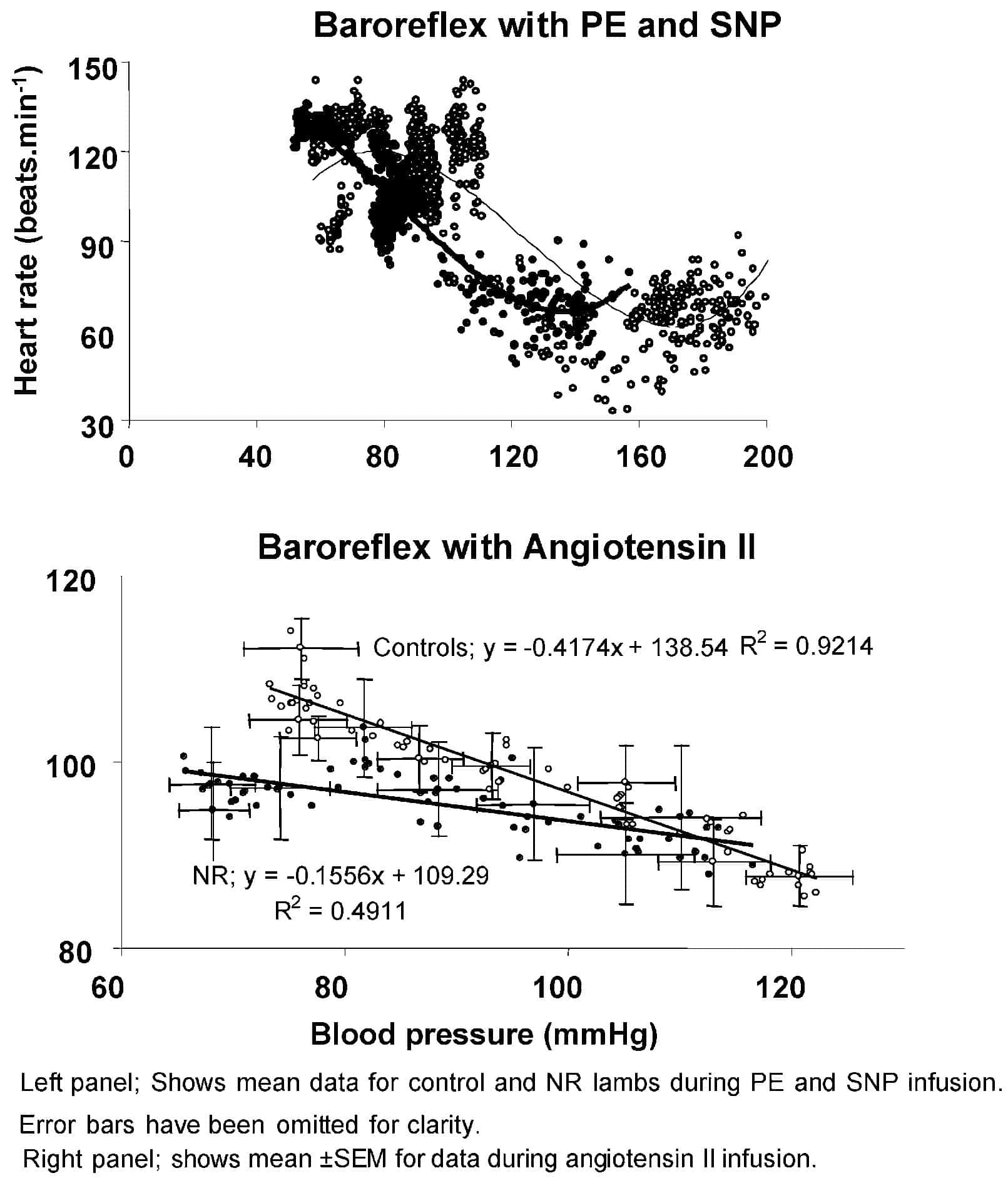Periconceptual undernutrition of sheep has been shown to program a number of cardiovascular and endocrinological perturbations mostly in late gestation fetuses but also in young sheep. In general it would appear that undernutrition during early development reduces fetal blood pressure and baroreflex sensitivity but increases the rate of rise in arterial blood pressure postnatally. The mechanisms mediating this effect are as yet unclear and no study has yet followed these previously undernourished lambs into later life. In addition, there are marked differences in baroreflex responses evoked by either phenylephrine or angiotensin II infusion. Thus the present study has examined cardiovascular function, in particular baroreflex control, in periconceptually-undernourished lambs at one year of age.
Twenty Mule ewes were randomly assigned into two groups to receive either a control diet (Control, n = 12) providing adequate energy and protein throughout gestation to term (term ~147 days gestation, dGA) or a nutrient restricted diet (a 50 % reduction in calculated requirement) from day 1-30 dGA (NR, n = 8). Ewes were individually housed from day 1 to term whereupon they lambed naturally. All lambs were ewe-reared as singletons to weaning and grass-fed thereafter. At one year of age the lambs were surgically instrumented under 1-2 % halothane (50:50 O2/N2O) with carotid and jugular cannulae. After at least 2 days recovery the lambs were walked into metabolic crates for cardiovascular recording at one-second intervals using pre-calibrated pressure transducers (SensorNor 840; S 4925) attached at heart level linked to a data acquisition system (Po-Ne-Mah; Version 3, Gould Instrument Systems Inc). Baroreflex curves were constructed from the parallel changes in diastolic blood pressure and heart rate induced by phenylephrine (PE; 75 µg kg-1 bolus), sodium nitroprusside (SNP; 2.5 µg kg-1 min-1 infusion for 5 mins) and angiotensin II (stepwise increments every 10 mins from 0-60 µg kg-1 min-1). At the end of all experiments the lambs were humanely euthased with a lethal dose of sodium pentobarbitone. Basal data are Means ± S.E.M. and were analysed by one-way ANOVA (for group). Baroreflex curves were analysed by multiple linear regression. All statistical analysis was conducted using SPSS 11.1.
Basal systolic blood pressure; 100 ± 4 vs. 99 ± 3 mmHg, diastolic blood pressure; 77 ± 4 vs. 70 ± 3 mmHg and heart rate; 106 ± 5 vs. 100 ± 4 beats min-1 were similar in control and NR lambs, respectively. However, pulse pressure (systolic-diastolic; 23 ± 1 vs. 28 ± 2 mmHg, P = 0.06) tended to be higher and the rate pressure product (heart rate X mean arterial pressure; 9.3 ± 0.7 vs. 7.9 ± 0.5 (beats min-1 mmHg) X 103, P = 0.005) significantly lower in NR relative to control fetuses.
An analysis of baroreflex function with PE and SNP indicated a reduced set point but similar sensitivity in NR lambs (Fig. 1, left panel). However with angiotensin II, despite similar increments in pressure the reduction in heart rate was markedly blunted in NR lambs relative to controls (Fig. 1, right panel). Analysis of baroreflex function was markedly blunted per se when using angiotensin II rather than PE.
The data illustrate that periconceptual undernutrition has little effect on peripheral vascular sensitivity to angiotensin II per se, but does program angiotensin II induced baroreflex control of the heart. The mechanisms for this effect may well relate to the developmental programming of angiotensin II receptor expression, in particular, in the cardiovascular control regions within the brain stem.
This work was supported by the University of Nottingham Fellowship program and the British Heart Foundation.

